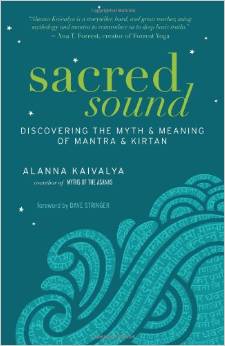
Archetypes, Mythology, and the Unconscious
 As a Life Purpose Alchemist, I love working with highly-creative, spiritually-minded women who desire a more authentic life, both personally and professionally. Through the wisdom of the moon phases, I gently guide my clients from darkness to light as they engage in a deeper, more meaningful relationship with their inner voice (what I like to call “the full moon within”). It’s this voice that inspires the choices they make as they create beautiful ripples of impact in the world that define their legacy.
As a Life Purpose Alchemist, I love working with highly-creative, spiritually-minded women who desire a more authentic life, both personally and professionally. Through the wisdom of the moon phases, I gently guide my clients from darkness to light as they engage in a deeper, more meaningful relationship with their inner voice (what I like to call “the full moon within”). It’s this voice that inspires the choices they make as they create beautiful ripples of impact in the world that define their legacy.
One of the most powerful pieces of work that we do comes in the new moon phase – which is the place of new beginnings. It’s here that we delve into the darkness of the unknown, exploring those parts of life and self that feel dark, disconnected, and misunderstood.
What are the gifts of being in darkness? And what are some creative ways of exploring this darkness?
Today, I’ve asked author Alanna Kaivalya to join me to share her thoughts on Archetypes, Mythology, and the Unconscious. This is a topic that she talks about in her book, Sacred Sound: Discovering the Myth & Meaning of Mantra and Kirtan – which was released by New World Library in April of this year. In her book, Alanna explores both the myth and meaning behind twenty-one mantras, or chants, that stem from the yogic tradition. She also describes the myth, text, or context each mantra comes from or is associated with, and explains how these rich myths relate to our modern-day spiritual practice.
This is what Alanna had to say about Archetypes, Mythology, and the Unconscious – and how they relate to the exploration of our own “shadow” and how we can use them to bring our inner world out.
*********
The infinite is indeed within. Deep in our own psyche — within everyone’s psyche — lives the framework of the human journey. These structural archetypes are the substructure of thousands of years of our collective hopes, dreams, desires, failures, and fears. These archetypal, shared experiences of the collective unconscious provide a common architecture for the stories — that is, the myths — we tell ourselves about our humanity, about our struggles and triumphs. When dressed up, brought to life, and vivified through our imagination, our mythic stories allow us to witness what is deeply inside us at play in front of us. Myths give us the context and the capability to bring our inner world out.
This is actually a critical part of our psycho-spiritual development process. As we delve into our spiritual practice, what we discover within will need to come up and out. The spiritual journey of the yoga practitioner will bring us face-to-face with the inner reaches of our unconscious — the part of our mind that is not known to us, which includes not just the autonomic functions, but the hidden drives behind nearly every action and reaction. Once we go inward, myths help us to bear everything we discover by giving our internal elements context. We gain a greater understanding of their nature and place in our lives.
What exactly are the things in our unconscious that myths help us see? Basically, anything (and all the things) we don’t want to look at about ourselves. These might be positive aspects of ourselves that we don’t want to admit, but most often these are the negative aspects that we refuse to acknowledge. This is our dark side, what Carl Jung would call our “shadow,” made up of the things that we have repressed, ignored, or otherwise left in the unconscious to be discovered at a later time. The question, though, when that later time arises, is will we be ready and willing to look at that shadow? And will we invite that shadow to come forth and show us where we are still not free? As long as what is buried in the unconscious remains there, it will prevent us from unleashing our full potential.
Spiritual transformation, particularly in Eastern spiritual practices, asks us to delve into the dark side. Nobody likes it. It’s not popular. But every hero in every mythic tradition has to uncover and explore their own dark side in order to discover their light. Many people in spiritual traditions today tend to be so focused on their light that they leave no room for the potent power of the shadow to show them what is really alive within them.
Think about Luke Skywalker when he is being trained by Yoda on Dagobah in The Empire Strikes Back. Yoda tells Luke to enter a cave, where he must slay his greatest fear. First, Darth Vader appears, but after Luke beheads the Sith lord, the mask cracks open to reveal Luke’s own face inside. The true nature of what Luke fears the most is not Darth Vader but rather his own darkness, fear, and anger. Overcoming this personal darkness is the hero’s greatest task, and it’s important because, as Carl Jung is rumored to have said, “until you make the unconscious conscious, it will direct your life and you will call it fate.” Until we bring forth what is lying in the unconscious, we are ignoring the part of ourselves that brings this world to life.
Mythology does that for us. It accesses the parts of our psyche that are yearning for a voice and expression. Through myth, we can come to know all the parts of our self and learn to accept ourselves entirely — the good, the bad, and the ugly. In our spiritual journey, mythology gives us the footing we need to navigate the rocky crags and sketchy footholds of what lies inside of us. As we delve inward, we discover that these seemingly dangerous territories are actually the tempered structures that give us a formidable strength that allows us to navigate anything. Through myths, we see that what was once a dangerous cliff is an opportunity to soar, and what was once a great monster is our greatest ally.
Further, while mythic archetypes are by definition enduring, their meanings are not scripted. They can have different meanings for different people. In this way, the metaphorical power of myth is both universal and specific; it places each of us within the context of the larger human journey and also helps us make sense of our individual, personal, and unique journey. Myths are neither factual reports nor dogmatic, rigid lessons that can only be interpreted and understood in one way.
How this works is a mystery, and author Joachim-Ernst Berendt, in his book The World Is Sound: Nada Brahma, captures this well when he writes, “To our western mind, legends and myths hail from ancient times, but the only reason they do so is because we have banished them there. In reality, they are now. They have come into existence because people need them. The rationalist believes he can do without myths. He doesn’t want to be made uncertain of his ‘belief’ that the rational mind is omnipotent.”
We need mythology, and we need what mythology brings to us: hope, inspiration, and meaning. We can find this when we embrace the truth of myth without needing it to be factually true. Literalizing myth removes its inherent universality, and it is precisely this mysterious quality of enduring malleability that enlivens myth and enables it to be meaningful for us.
# # #
*Adapted from the book Sacred Sound © 2014 by Alanna Kaivalya. Printed with permission of New World Library, Novato, CA. www.newworldlibrary.com
 Alanna Kaivalya is the author of Sacred Sound. She is the yoga world’s expert on Hindu mythology and mysticism. Her podcasts have been heard by more than one million people worldwide, and her Kaivalya Yoga Method melds mythology, philosophy, and yoga. Visit her online at http://www.alannak.com.
Alanna Kaivalya is the author of Sacred Sound. She is the yoga world’s expert on Hindu mythology and mysticism. Her podcasts have been heard by more than one million people worldwide, and her Kaivalya Yoga Method melds mythology, philosophy, and yoga. Visit her online at http://www.alannak.com.


7 Comments
Sangita
Hi Tina,
Thank you for sharing such a wonderful article:) I love “the full moon within” concept.
Love and Light ~ Sangita
Dorothy Fitzer
Loved it Tina! This is something I emphasize so much with my clients and students. Not only is there deep fear in that shadow, but many of our most brilliant of gifts. Love!
Cher
Great explanation of myths that Alanna provides and how they can help us engage parts of ourselves to act in accordance with self-improvement for our purpose
Cher Gunderson
masteryouraccent.com
Christine
I love how this helps in understanding part of ourselves that we can’t always access and it does so in a way that is gentle and for me sometimes fun. Thanks for sharing!
Vickie LeGare
Very thought provoking.
Svetlana
“What are the gifts of being in darkness? And what are some creative ways of exploring this darkness?”
Usually it is how and where the journey of self-discovery starts – when we face and start exploring who we really are, the most beautiful gifts of light get to be discovered….
Tina, Thank you for your gifts, and for sharing them,
Svetlana
http://www.newZest4Life.com
Teena
Hi Tina – Thank you for sharing Alanna’s wisdom – I remember being in a yoga class with her years ago in Boulder, CO. We both lived there and crossed paths quite often. It is so wonderful to have such amazing women in the world such as yourself! Thank you for sharing
Teena
http://www.coupletherapyconnection.com